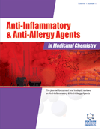-
oa Methamphetamine and HIV Infection, Role in Neurocognitive Dysfunction
- Source: Anti-Inflammatory & Anti-Allergy Agents in Medicinal Chemistry (Formerly Current Medicinal Chemistry - Anti-Inflammatory and Anti-Allergy Agents), Volume 8, Issue 2, Jun 2009, p. 184 - 191
-
- 01 Jun 2009
Abstract
The use of methamphetamine is steadily increasing worldwide. Its use is associated with high-risk sexual behavior and subsequent infection with HIV. Methamphetamine has profound effects on the brain both as an acute intoxicant and following chronic exposure. The combined effects of HIV and methamphetamine appear to result in widespread neuronal and white matter injury. These changes are most prominent in the basal ganglia and frontal lobe, and are not restricted to dopaminergic neurons. Additionally, methamphetamine and HIV proteins disrupt the blood brain barrier, cause glial cell activation and impair the function of neural progenitor cells. Methamphetamine also results in increased HIV replication via activation of chemokine receptors involved in HIV entry. Common pathways in several of these effects seem to involve induction of oxidative stress. Characterization of these subcellular pathways and identification of common targets is essential for development of therapeutic strategies for HIV-infected methamphetamine abusers.


